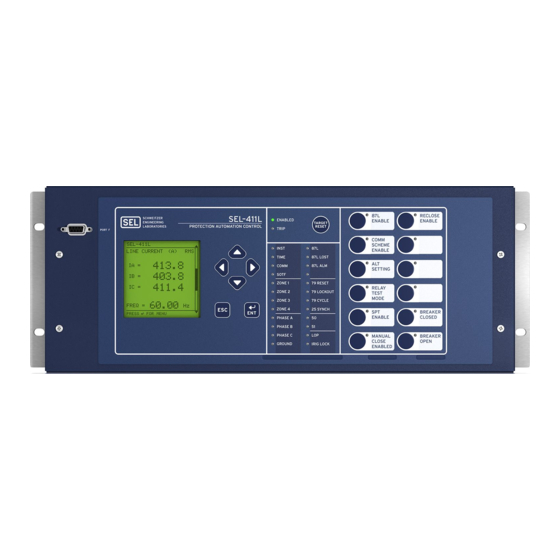
Sel 411L Line Differential Protection Manuals
Manuals and User Guides for Sel 411L Line Differential Protection. We have 1 Sel 411L Line Differential Protection manual available for free PDF download: Instruction Manual
Sel 411L Instruction Manual (1108 pages)
Protection and Automation System
Table of Contents
-
-
Preface35
-
Features44
-
Applications50
-
Jumpers76
-
Connection87
-
Fault Location231
-
Pole Open Logic242
-
Directionality262
-
Zone Time Delay305
-
Trip Logic345
-
Manual Closing494
-
Overview519
-
Alias Settings520
-
Global Settings522
-
Notes Settings528
-
Output Settings528
-
Port Settings536
-
Bay Settings544
-
Oscillography619
-
Metering671
-
Test Precautions717
-
Test Mode718
-
Test Methods728
-
Relay Self-Tests752
-
Overview761
-
Disconnect Logic762
-
Fault Analysis823
-
Ogic825
-
Row List967
-
Firmware1037
-
ICD File1044
-
Sel Boot1044
-
Manual1045
-
Overview1051
-
Upgrade Procedure1052
-
Table 5.17 DNP31092
-
Table 6.5 Help1092
-
Advertisement
Advertisement
